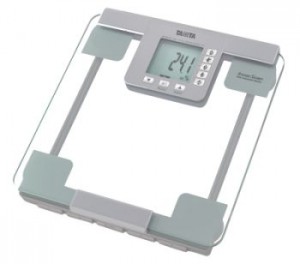Normal Healthy Weight?
 It’s a simple question, and one we ask ourselves all the time: what is healthy weight for me? It seems like it should be easy enough to figure out – you can look at standard height weight chart, estimate your frame size (and be honest – not everyone is “large”) and get a pretty good idea of your ideal weight. Or, you could use a Body Mass Index Calculator – based on your height and weight, you’re categorized as underweight, normal, overweight or obese. These tools – while useful – don’t paint the entire picture, though.
It’s a simple question, and one we ask ourselves all the time: what is healthy weight for me? It seems like it should be easy enough to figure out – you can look at standard height weight chart, estimate your frame size (and be honest – not everyone is “large”) and get a pretty good idea of your ideal weight. Or, you could use a Body Mass Index Calculator – based on your height and weight, you’re categorized as underweight, normal, overweight or obese. These tools – while useful – don’t paint the entire picture, though.
Standard height weight charts have been around for a long time. Ideal weight ranges for men and women are based on information gathered by the Metropolitan Life Insurance Company – something they’ve been doing since the 1950’s and last updated in 1999. After figuring out your frame size and your height (the charts tell you to select your height in one-inch heels), you can see whether you fall in range.
It’s a bit of a stab in the dark, though, since height weight charts don’t take into account how much fat or how much muscle you have. Similarly, the Body Mass Index (BMI) only takes into account your weight in relationship to your height. How much fat and muscle you have doesn’t factor in there, either.
This matters for a couple of reasons. First, obesity is a condition in which someone has excess body fat – not just that they are overweight. A heavily-muscled person – like a well-trained athlete, or even some of your favorite movie stars – may be ‘overweight’ according to a height weight chart, or have a high body mass index, but they’re certainly not overfat – they’re weight is higher than the average person because they’ve got so much muscle. So for them, the standard charts really don’t apply.
On the flip side, there are people who have lots of body fat, but they look proportional – they’re what’s sometimes called, “skinny fat”. They might have a normal body mass index, or fall in a normal range on the height and weight chart, but technically, they’re obese – they’ve got way too much body fat. I’ve seen this in people of all ages – in sedentary college students, and in older people who don’t lift weights to build and maintain their muscles.
So figuring out your normal healthy weight is something that, ideally, is based on an analysis of your body composition – how much fat, and how much lean body mass you have. Since we know what the ‘good’ ranges of body fat are (about 14-18% for men; about 20-25% for women), knowing how much fat you have can help you determine more accurately where your weight ought to be. If you’re a muscular guy with a high BMI but 15% body fat, you’re fine. If you’re a size 2 gal with 28% body fat, you’d be wise to start pumping some iron.
There are various methods that can determine body composition fairly accurately, but if they’re not available to you, all you need is a mirror, your thumb and your forefinger. If you can ‘pinch an inch’ around your middle, above your knee, on the back of your arm, or on your back, you’re probably carrying too much fat. And while you might not be able to say precisely how much you should weigh, the easy answer for you is probably, “less than you weigh now”.
Written by S Bowerman, MS, RD, CSSD.
Full Body Compostion Analysis
At the Arriba! Weight Loss Chalelnge we do not just focus on what the scales say. Each week members receive a full body analysis which allows us to monitor, amongst other things: Weight, Body Fat % , Hydration Levels, Muscle Mass, Bone Mass, Metabolic Rate, Metabolic Age and Normal Visceral (Internal) Fat Levels.

Leave a Reply